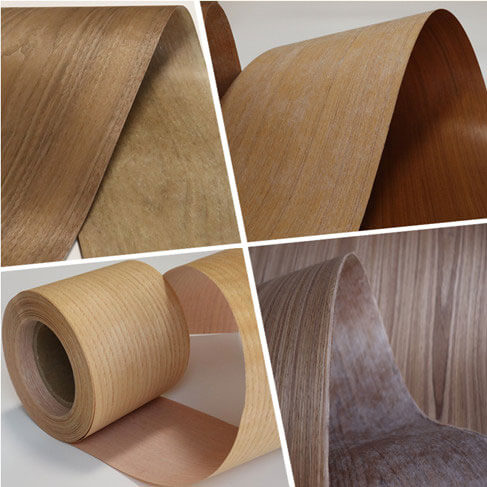Fleece Backed Veneer
Fleece backed veneer is the wood veneer sheet or rolls bond with non-woven fabric.
Maybe you are curious about what is the fleece. Actually, it is non woven fabric, also known as textile.
Usually, paper thin wood veneer sheets bond with fleece as back. It makes the thin wood veneer sheets stable, durable, and flexible.
So if you want to apply ultra-thin wood veneer for furniture, door, or profile wrapping. Fleece veneer is your best option.
We use 25 gsm quality white non-woven fabric as standard for fleece back veneer sheets. Besides, you can choose to use 40 gsm quality thick non woven fabric.
The fleece backed engineered veneer is in great demand for interior door manufacturing. For example, fleece backed oak veneer and fleece backed walnut veneer are two best selling.
5 Main Types of Fleece Backed Veneer Sheets and Rolls
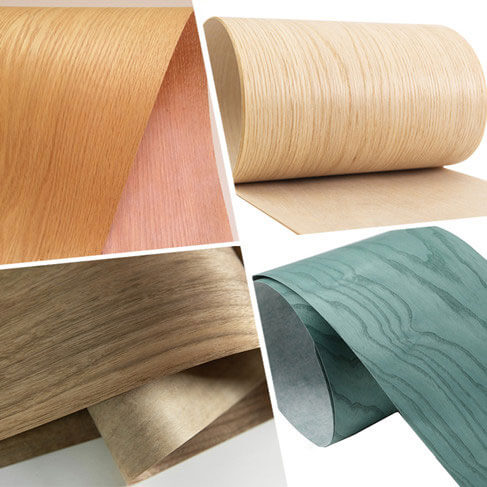
Fleece Backed Natural Real Veneer
For the best use of natural wood resources and reduction of costs. People consider cutting the wood veneer sheets as thin as possible.
But there is a big problem, which is the thin veneer sheet is easy to break and crack in the application.
For example, natural oak veneer, Burma teak veneer, and Santos rosewood veneer can be 0.1mm thin. As we know, it seems that only Chinese veneered plywood/MDF factories can apply raw wet super thin veneers on the substrate.
And some special woodworking projects want the natural wood veneer is super thin to have better light transparency. But, the carpenter can not deal with raw wet natural veneer.
In this regard, fleece backed natural veneer is your best choice.
Fleece Backed Engineered Veneer
Compared with natural veneers, the engineered veneer has the consistency of colors and grains sheet to sheet.
Moreover, the engineered veneer can be 2500x640mm big sheet or 2500x1250mm for the panel size.
The engineered veneer sheet size can also be customized to match the wood door panel size.
Then you will know how easy it is to face whole sheet thin veneers on the door panels when you get 0.2mm thickness with fleece backing.
You do not need to cut or splice engineered veneer sheets. And there are a few losses of materials.
Not only thin engineered veneer with fleece but some wood door manufacturers choose 0.4mm and 0.5mm thick veneer with fleece back.
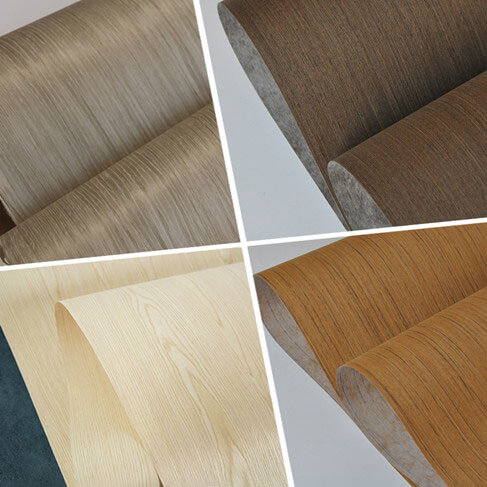
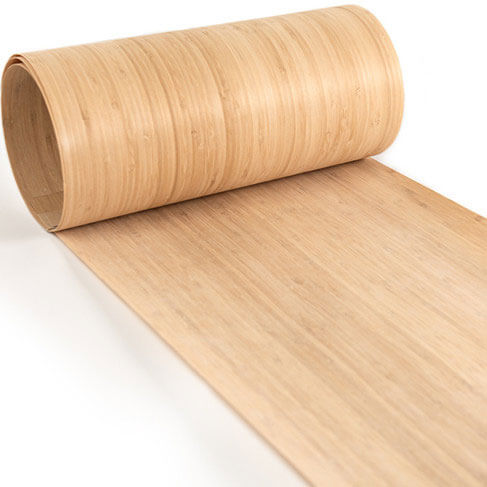
Fleece Backed Bamboo Veneer
In fact, the bamboo veneer is one type of recomposed veneer sheet.
Without fleece backing support, you can not use a raw bamboo veneer. Because there are many splits between bamboo strips.
From 0.25mm thin bamboo veneer sheets to 0.6mm thick bamboo veneer sheets, all have to be with fleece back support.
As you probably know, fleece peeling is the main quality problem for bamboo veneer sheets.
So if you want to buy good quality bamboo veneers. You have to check the fleece bonding quality and veneer surface quality together.
The standard bamboo veneer sheet size is 2500x430mm. But the width can be spliced to 640mm, 860mm, or 1260mm.
Fleece Backed Veneer Rolls
Almost all the wood veneer rolls with fleece backing.
One type of fleece veneer roll is applied for edge banding, another is for profile wrapping.
Good quality fleece bonding makes wood veneer rolls have a better bear tension, increase the bond, and prevent splitting.
In most cases, all the natural wood veneer rolls or engineered veneer rolls have to be with fleece back support.
For example, the most popular fleece back red oak veneer rolls, white oak veneer rolls, and American walnut veneer rolls. And some common Africa wood species, Sapeli veneer rolls, Mahogany veneer rolls, and Okoume veneer rolls.
Those fleece-backed wood veneer edge banding and profile wrapping veneer have wide applications. For door trim, window casing, skirting baseboard, and molding profile.
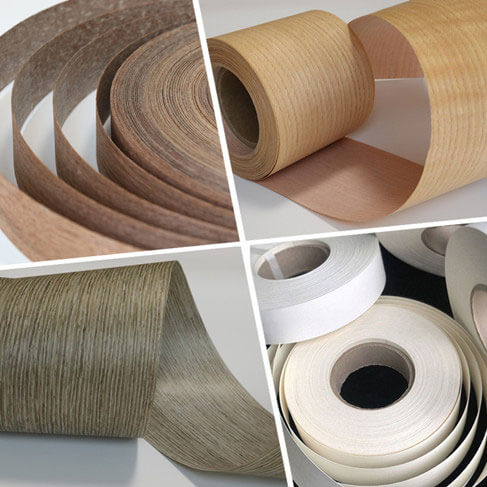
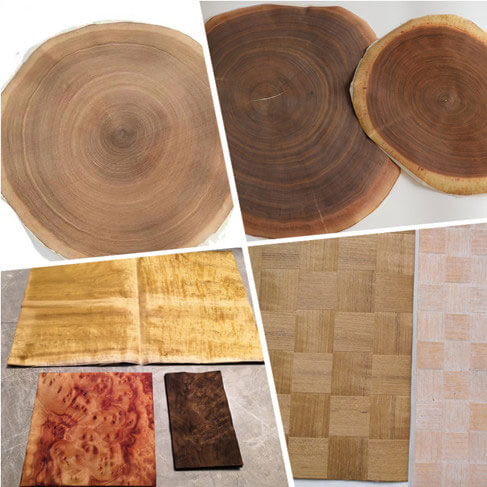
Rare Veneer With Fleece Backing
For some rare and exotic wood veneers, which will be cut into 0.1mm to 0.2mm ultra-thin.
So that we have to bond veneer sheets with fleece to make it flexible.
For example, cross cut end grain veneer, they are easy to break. Especially for oak end grain veneer and ash end grain veneer, which is unfirm. Usually, we make the veneers with fleece back to avoid breaking in the applications.
For end grain walnut veneer round pieces, even stable than ash veneer, but we still suggest making fleece backed.
Needless to say, those fleece-backed thin veneers will be durable and flexible.
Such as woven veneer, hot press fleece backing layer can make the woven pattern stable.
And some matching veneer layons also need to make fleece backing support.
20 Related Fleece Backed Wood Veneer Products
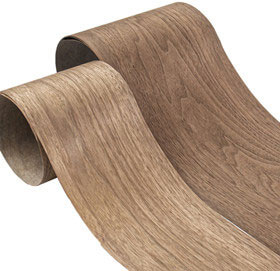
Fleece Backed Walnut Veneer
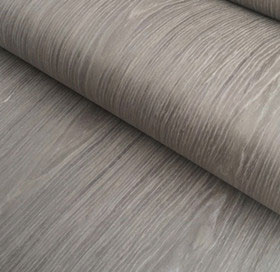
Fleece Backed Grey Veneer
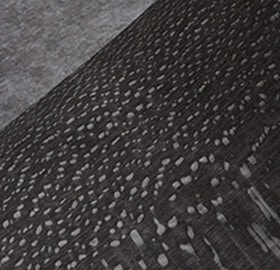
Fleece Backed Dyed Veneer
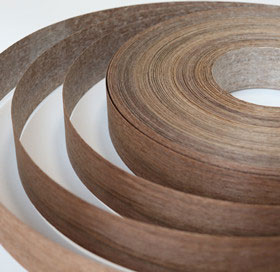
Walnut Veneer Edge Banding
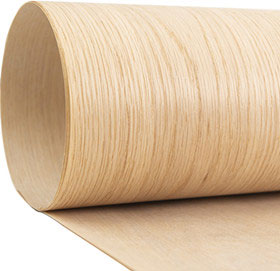
Fleece Backed Oak Veneer
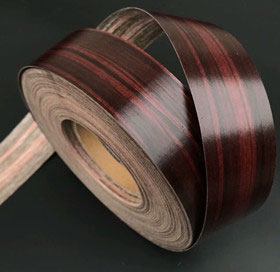
UV Prefinished Edge Banding
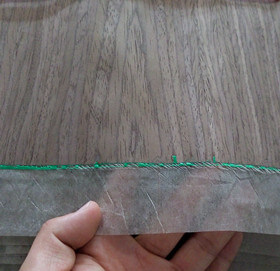
Fleece Recon Walnut Veneer
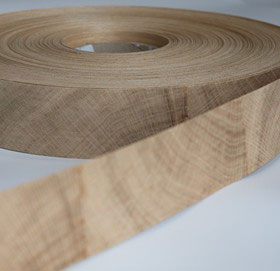
Oak End Grain Edging
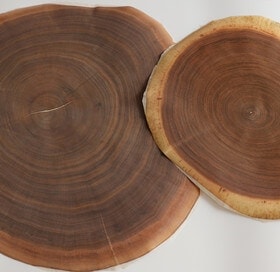
Cross Cut Walnut Veneer
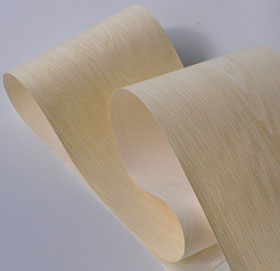
Fleece Backed Maple Veneer
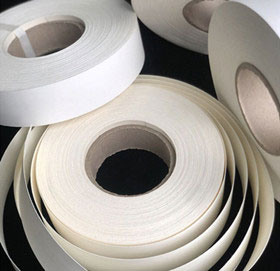
White Veneer Edge Banding
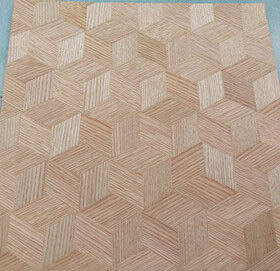
Fleece Back Woven Veneer
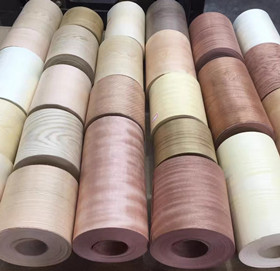
Fleece Back Wrapping Veneer
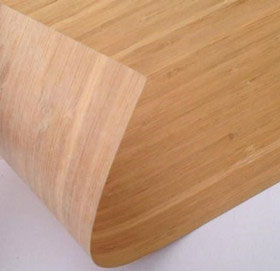
Fleece Back Bamboo Veneer
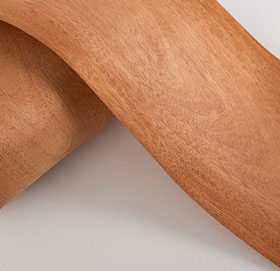
Fleece Back Mahogany Veneer
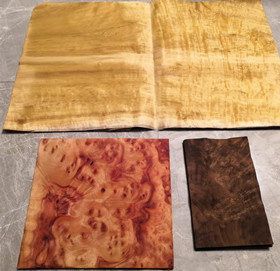
Fleece Back Burl Veneer
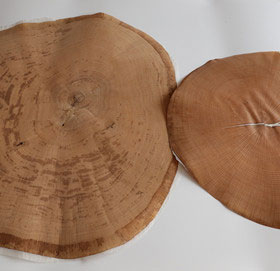
End Grain Oak Veneer
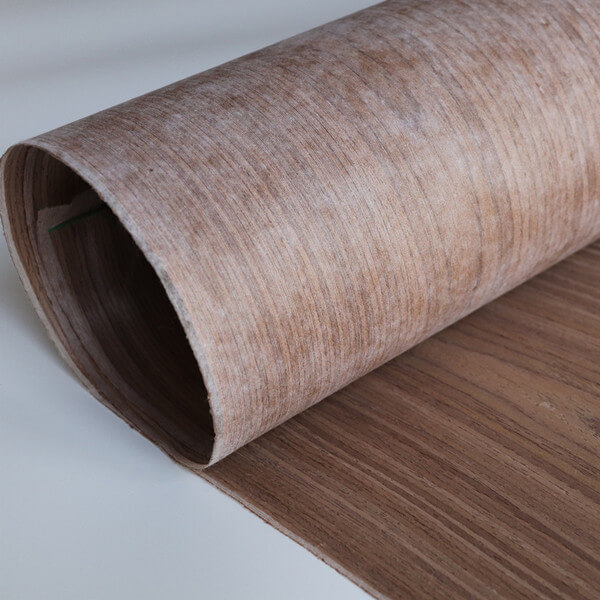
Fleece EV Walnut Veneer
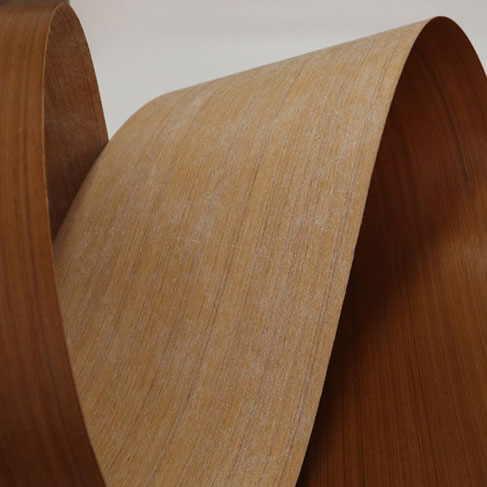
End Grain Oak Veneer
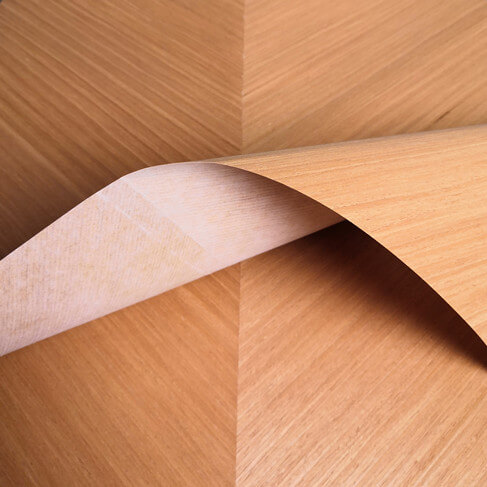
Fleece Back Matching Veneer
Nowadays, the mass production of fleece veneer is natural veneer and engineered veneer.
For fleece veneers, most are 0.2mm thin veneer sheets. They have competitive prices compare with the thick veneer.
But there are still many problems that happen when people choose or apply the fleece veneer. For example, fleece veneer quality grade and fleece band quality. They are the most important parts when you buy fleece veneers for mass production.
All the fleece wood veneers need to put on plywood, MDF, particleboard as the face layers. To produce wood door, cabinet, furniture, or wallcovering. And the wood veneer rolls are used in plywood edge sealing and profile wrapping.
Frequently Asked Questions (FAQs)
Q1. What is fleece backed veneer?
A1. The fleece-backed wood veneer is the wood veneer sheet bond with non-woven fabric as the back layer.
Q2. How many types of fleece back veneer?
A2. There are 3 main types of fleece back veneer. Fleece-backed natural veneer, fleece backed engineered veneer, and fleece bamboo veneer. Any type of wood species can be with fleece backing as wood veneer sheets to rolls.
Q3. How thick/thin should the fleece backed wood veneer be?
A3. Usually, 0.15mm super-thin wood veneer to 0.25mm veneer sheets need to make fleece backing to make the thin wood veneers stable, durable, and flexible. But, some reconstituted veneer buyers ask for 0.4mm and 0.5mm thickness recon veneers with fleece backed.
Q4. What is the fleece veneer specification?
A4. In fact, fleece veneer sheet size is depended on the press machine working specification. Our press machine’s max length is 3100mm with a max-width of 1400mm. But for fleece backed wood veneer rolls, the max width is 640mm with unlimited coil length.
Q5. How to apply fleece backed wood veneer?
A5. Usually, fleece backed wood veneer is the same as common natural veneer sheets. So they are the same when facing furniture panels, like plywood, MDF, particleboard, and blockboard.
Q6. How do you fix wrinkled wood veneer?
A6. With fleece backing and hot pressing, the wrinkled veneer sheets will be flat and wrinkleless.
Q7. Why use fleece veneer?
A7. We use fleece veneer, most are 0.2mm to 0.25mm thin wood veneer sheets. Thin natural wood veneers give the best utilization of wood resources. We can use the same volume of trees to make more area surface decoration. Besides, the fleece veneers are durable and flexible. It is easy to wrapping the molding profiles or door trims.
Q8. Where to buy fleece backed veneer sheets and rolls?
A8. The fleece back veneer is in mass production in the Chinese veneer market. You can find many types of natural wood veneer and reconstituted veneers here. The most important is that you can get the veneers thickness from 0.15mm to 0.5mm as your need.
